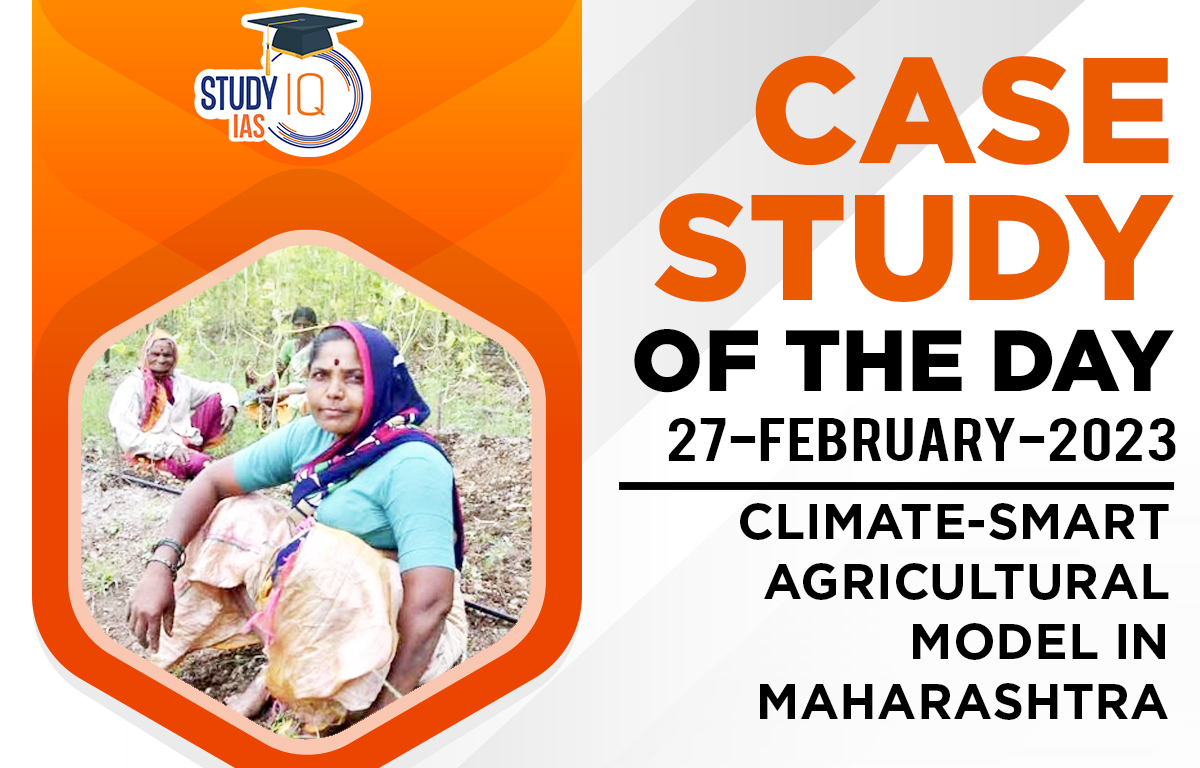Table of Contents
Background: A climate-smart agriculture model has been implemented in Marathwada region of Maharashtra, by an NGO named Swayam Shikshan Prayog (SSP). Marathwada is recognised as one of India’s most drought-prone areas.
About the Climate-smart Agricultural Model
- The prior situation before implementation of model:
- Marginal farmers grew cash crops, which required more water, chemical fertilizers and pesticides; which further damaged their land, health and the environment in the long run.
- The women in the region engaged in agriculture, had no support from government extension programmes to enhance their capacities.
- Implementation:
- Women were encouraged to ask their families to lend them part of the land for the cultivation of vegetables, fruits, local grains and pulses.
- SSP supported women farmers through a Community Resilience Fund, which promoted low-input based agriculture, multiple cropping with water efficient plant varieties and germination of local seeds.
- The model used simple drip irrigation, sprinklers, farm ponds and tree plantations as part of an efficient water management system.
- The Krishi Vigyan Kendras (agricultural extension centres) trained women in techniques of soil testing, water testing, seed preservation, use of drought resistant seeds and land mulching.
- Lobbying and advocacy through grassroots leaders and dialogues with government authorities resulted in women farmers, obtaining access to agriculture schemes and benefits.
- The results of the model:
- Since 2015, around 30,000 acres of dry land are managed using organic farming methods and water and soil conservation measures.
- There has been a 25% increase in crop yield due to the use of mixed-cropping methods and organic-inputs.
- Women farmer households savings have increased, due to consumption of food from their farms.
- Adoption of a market-based approach encourages first-time access for marginal women farmers, and further competitive prices for their yield.
- The model has brought women to the forefront and repositioned them as farmers (instead of labourers) and bearers of knowledge.
Conclusion
- Going into the future with risks of climate change, the above case study shows how agricultural techniques, livelihood diversification, social and cultural factors and innovative financial models can strengthen the position of farmers.


 Daily Quiz 11 July 2025
Daily Quiz 11 July 2025
 Operation Baam: Baloch Separatist Group ...
Operation Baam: Baloch Separatist Group ...
 Article 326 and Electoral Roll Revision ...
Article 326 and Electoral Roll Revision ...





















